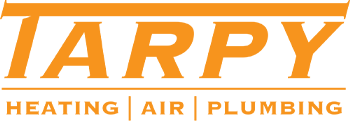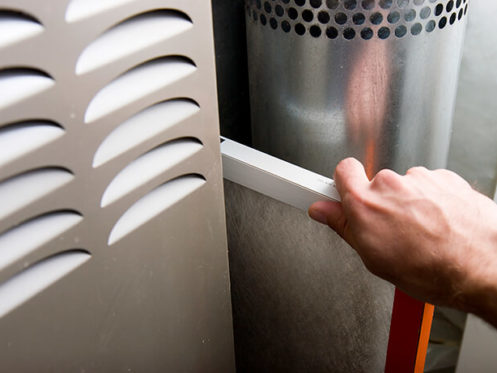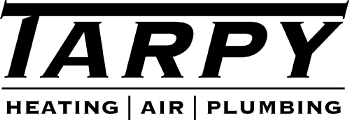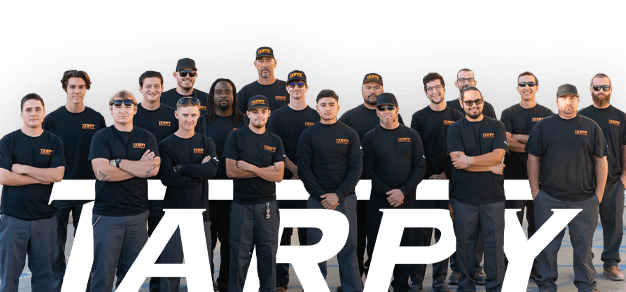Adequate airflow is essential to a comfortable and healthy home. Good air circulation makes it easier to heat or cool a home, ensure even temperatures throughout a residence and minimize air pollution levels. With that in mind, let us consider strategies to improve the flow of air in your home.
Dust Often
Dust is your number one enemy when it comes to air quality in a home. Dust also leads to poorer airflow because it is trapped by registers and vents, causes air filters to clog more quickly and accumulates in your ductwork and on your heating, cooling and ventilation equipment.
You cannot dust too often. The professional recommendation is that you dust your entire home at least once a week or hire a cleaning service to do it. Dust each room from top to bottom. After dusting a room, vacuum it. Ideally, use a vacuum with a HEPA air filter in order to ensure that most dust is trapped rather than recirculated. It also helps to use a vacuum that can handle hardwood floors and the like.
Inspect and Clean Vents
At least once a month, you should walk through your home and inspect all vents, registers and so forth. Dust the outside and any air deflector if applicable. Ensure that the vent is fully open in terms of the amount of air that can pass through it. Note that in traditional HVAC systems, all vents should be fully open. Exceptions include systems that have variable-speed air handlers. If you are unsure what your system can handle, maintain open vents until consulting with an HVAC professional.
Positioning of your vents and registers matters. If they are installed on the ceiling or high on the walls, then you have little to worry about besides dust. If, on the other hand, you have vents that are installed on the floor, along the baseboard or at chair rail height, then it is necessary to look for other obstructions. It is very easy, for instance, to disrupt airflow with furniture and decor.
Replace or Clean Air Filters
Most home heating and cooling systems will have at least one register that opens and has an air filter. Depending on the size of your home and the specific type of equipment, you may have two or more such registers. During your monthly inspection of your ventilation system, these should be opened, and the air filter should be visually examined. If the accumulated dirt is visible, you should replace the filter.
The general rule is that filters should be replaced every three months. But it really depends on your home. If you are a pet owner, for instance, you may have to change them more often. It is best to change them when needed rather than on a set schedule. Most air filters for HVAC are designed to be discarded after a single use. You should never try to clean and reuse these. There are, however, filters that can be cleaned and reused, and these are made to last for years as opposed to months.
Use an Air Cleaner
Air cleaners are a useful addition to a home because they help to control dust. Options range from whole-home air cleaning systems to portable air cleaners that you can carry with you from room to room. A whole-home system can make a significant difference in combatting dust. Portable units are used more for comfort than airflow but can be effective in particularly problematic areas. Note that an air purifier is an air cleaner that also sanitizes the air. This is not necessary from the perspective of air circulation but may be a worthwhile investment for your comfort and health.
Install and Use Ceiling Fans
Ceiling fans are useful in almost every room in a home and are highly recommended for a number of reasons. One reason is that they help to distribute conditioned air evenly throughout a home, which makes a residence cheaper to heat and cool. When you need the AC on, the moving air also helps you feel cooler, which means that you can set the temperature several degrees higher. Be mindful that there is a fan setting for winter and another for summer, and using the appropriate mode is important.
Ceiling fans are also very effective at increasing the amount of airflow in a home. If you want to increase airflow in a room where a ceiling fan is not appropriate or simply undesired, you may want to consider an air circulator. “Air circulator” may seem like a fancy name for a fan, but good air circulators do much more than blow air. They are designed to increase airflow and shape the airflow pattern.
Use Exhaust Fans in Kitchens and Bathrooms
Did you know that kitchens and bathrooms are the leading causes of indoor air pollution? Use the bathroom exhaust whenever the shower is in use. In the kitchen, activate the exhaust five minutes prior to using any appliances and keep it running until 15 minutes after the last appliance is turned off.
Schedule Seasonal HVAC Maintenance
Seasonal HVAC maintenance should be scheduled in spring and again in autumn. During this service, your HVAC technician will inspect your ventilation system to ensure that it is working optimally.
Schedule Periodic Duct Cleaning
If you have a central HVAC system, then your ductwork is essential to your ventilation. For the purposes of indoor air quality, it is a good idea to have your ducts professionally cleaned every three to five years. This is also an opportunity for your HVAC company to inspect the ductwork comprehensively and make any repairs if necessary. Uncorrected ductwork issues can and often do undermine the airflow in a home.
Install a Ventilator
Modern homes are so well constructed that inadequate ventilation is a serious and more prevalent problem. One way to improve air circulation is by installing a mechanical ventilator, such as a heat recovery ventilator or energy recovery ventilator. An HRV or ERV will not only improve ventilation but will increase the efficiency of your HVAC system overall.
Schedule an Energy Audit
The industry recommendation is to have a home energy audit performed about every five years. A professional audit will reveal all of the areas where your home is inefficient, and the report will be prioritized so that you no where to target. There are a number of key areas that could be undermining air circulation in your home. These include the ventilation system, attic ventilation, insulation, windows, sealing, crawlspace, foundation and so forth.
Your Ventilation Experts in San Diego
Tarpy Plumbing, Heating & Air is a fully licensed and insured heating, cooling and plumbing company that serves San Diego and the surrounding areas. We can help you assess airflow in your home and improve it through better ventilation and indoor air quality products. Our team also installs, services and repairs all manner of home heating and cooling equipment, and we provide a full range of plumbing services, including water heaters, drain cleaning, piper repair, and sewer maintenance. Call us today or contact us online to learn more about our services and to schedule an appointment.


 SPECIALISTS
SPECIALISTS

